Lesson summary
Students will explore political cartoons that represent the creators' opinions about events associated with the Commonwealth Games. They will explore the literary devices in these texts and create a political cartoon or caricature to highlight an issue or event, and to share their opinion.
Learning intentions
Students will:
- explore political cartoon representations of the Commonwealth Games and Australian athletes
- identify the literary devices and imagery used to convey context.
Success criteria
Students can:
- explain literary devices and imagery present in political cartoons
- create their own political cartoon portraying their opinion about an issue or event.
Lesson guides and printables
Curriculum links
Select your curriculum from the options below.
Lesson details
Skills
This lesson is designed to build students’ competencies in the following skills:
- creative thinking
- critical thinking
- collaboration
- cultural understanding
- digital literacy
- intercultural understanding
- global citizenship
Curriculum Mapping
Australian Curriculum (v9.0) content description:
Year 7 English
Students can:
- explain the ways that literary devices and language features such as dialogue, and images are used to create character, and to influence emotions and opinions in different types of texts (AC9E7LE03)
- create and edit literary texts that experiment with language features and literary devices encountered in texts (AC9E7LE07).
Year 8 English
Students can:
- identify how texts reflect contexts (AC9E8LY01)
- explain how language and/or images in texts position readers to respond and form viewpoints (AC9E8LE03).
Relevant parts of Year 7 English achievement standards: Students interact with others, and listen to and create spoken and/or multimodal texts, including literary texts. With different purposes and for audiences, they discuss, express and expand ideas with evidence. Students adopt language features, including literary devices, and/or multimodal features and features of voice.
Relevant part of Year 8 English achievement standards: Students read, view and comprehend a range of texts created to inform, influence and/or engage audiences. They explain how ideas are represented and how texts reflect or challenge contexts.
General capabilities: Critical and Creative Thinking, Ethical Understanding, Intercultural Understanding, Literacy
Cross-curriculum priority: Aboriginal and Torres Strait Islander Histories and Cultures, Asia and Australia’s Engagement with Asia, Sustainability
Level of teacher scaffolding: High - the teacher curates a collection of political cartoons as texts to explore, discuss, and emulate. Teacher scaffolding is needed for discussing context and meaning.
UN Sustainable Development Goals
- Target 16.a: strengthen relevant national institutions, including through international cooperation, for building capacity at all levels, in particular in developing countries, to prevent violence and combat terrorism and crime.
Resources Required
- device capable of displaying audiovisual material
- digital or physical space in which students can contribute examples of cartoons
- pens, paper and writing materials
- Political Cartoons Visual Explainer
- student access to individual digital devices such as iPads, tablets or laptops
- Student Worksheet (1 per student).
Additional Info
These resources have been created with the support of the Australian Commonwealth Games Team, via Commonwealth Games Australia.
The Australian Commonwealth Games Team are set to take on the athletes of he world at the Glasgow 2026 Commonwealth Games from next year, and together the more than 250 athletes in green and gold aim to be the top nation at the Games in terms of gold and overall medals won, the number of medallists, and the number of sports winning medals.
You can cheer on Australia’s best across the screens of 7 and 7Plus from 23 July 2026.
Related Professional Learning
How to Teach Critical Thinking General Capability - Secondary
Quick Summary: This course will help you teach your students to view the world more critically by introspectively exploring their own biases in thinking.
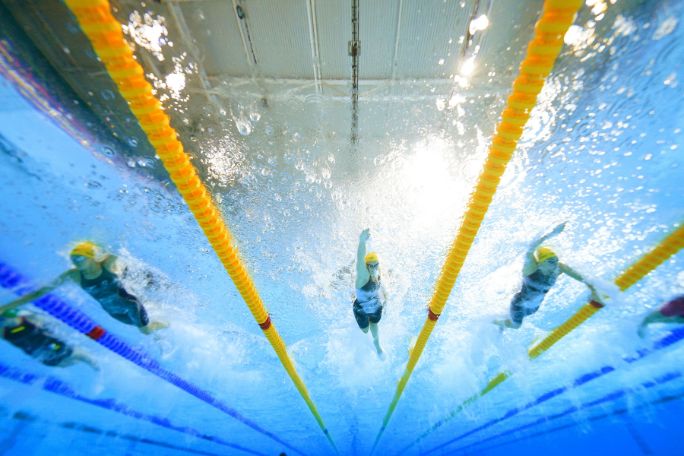
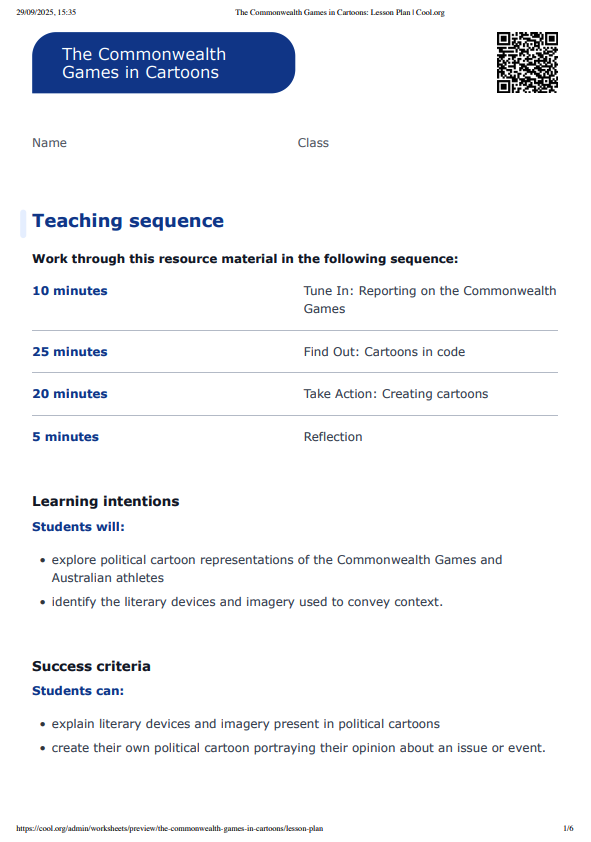
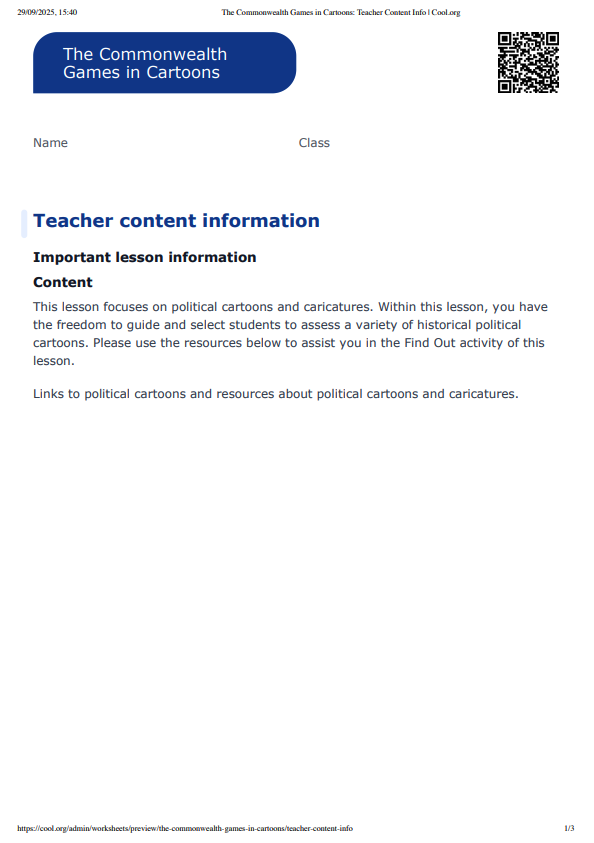
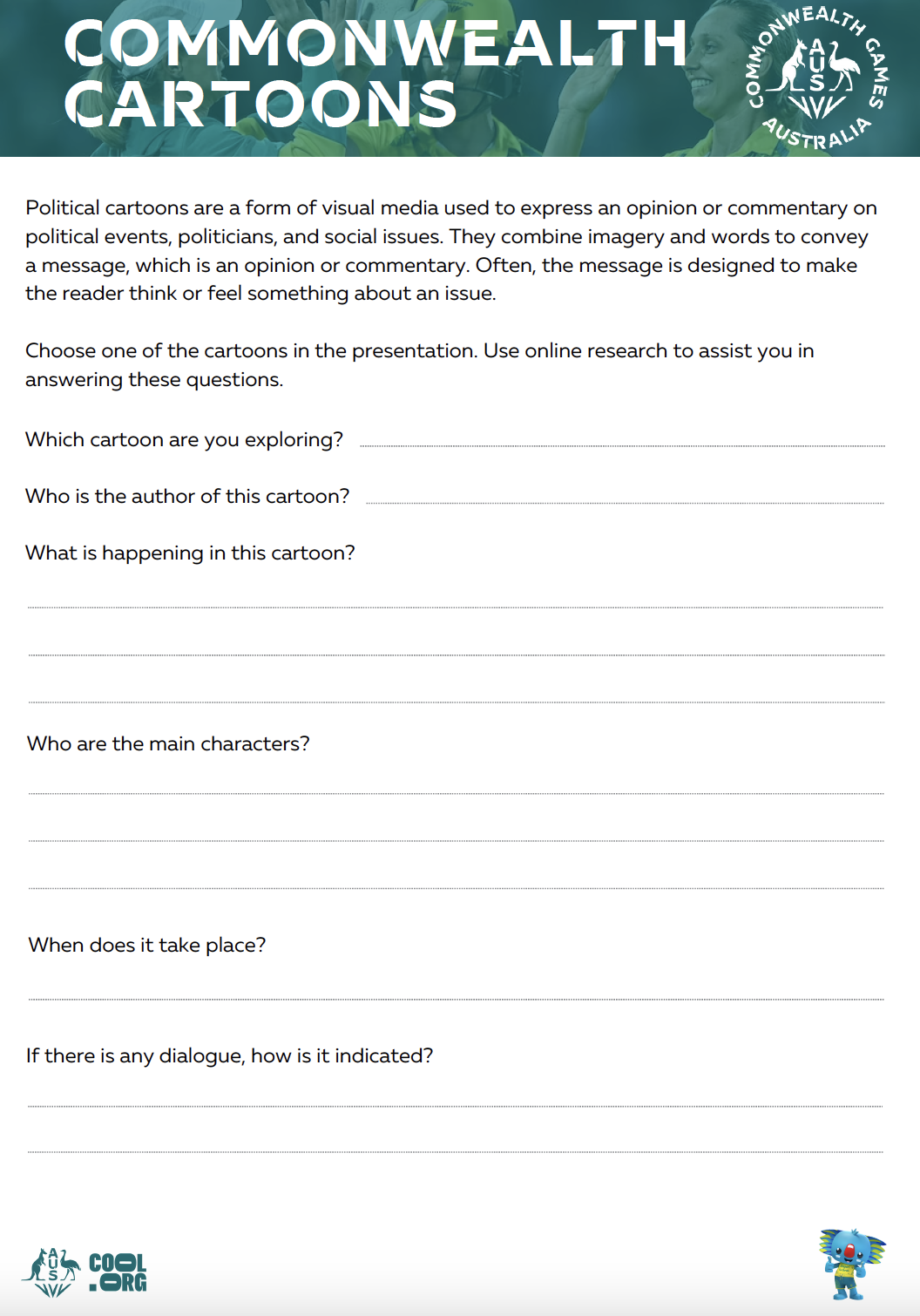
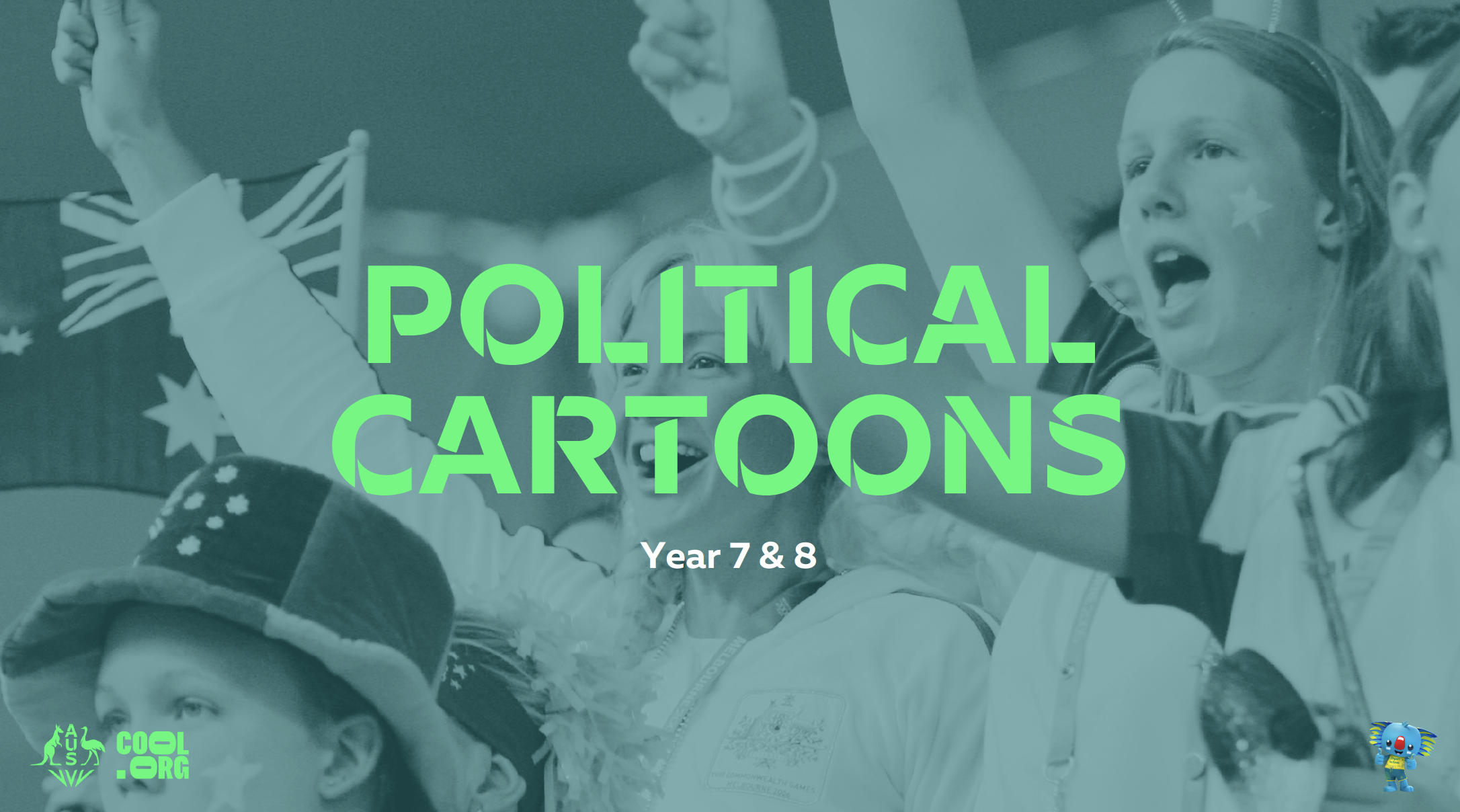
Welcome back!
Don't have an account yet?
Log in with:
Create your free Cool.org account.
Many of our resources are free, with an option to upgrade to Cool+ for premium content.
Already have an account?
Sign up with:
By signing up you accept Cool.org's Terms and Conditions(Opens in new tab) and Privacy Policy(Opens in new tab).